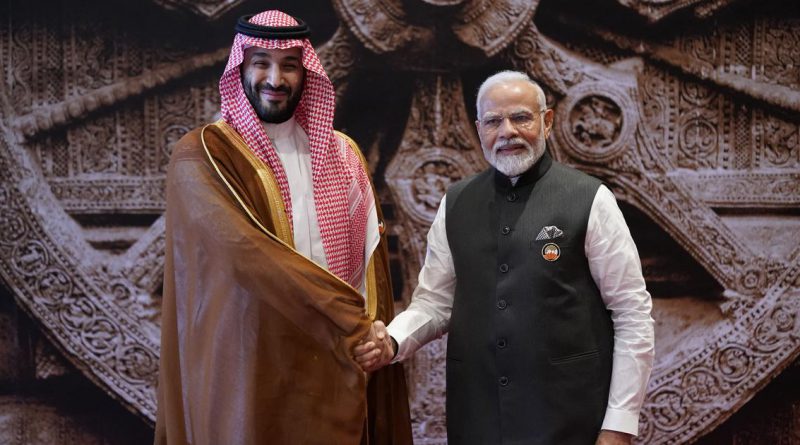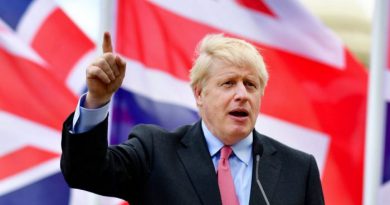Why Modi’s Visit to Jeddah Signals a New Era in India-Saudi Diplomacy
Choosing Jeddah wasn’t random—it’s a strategic signal.
Prime Minister Narendra Modi’s two-day trip to Saudi Arabia in April 2025 is more than just a diplomatic formality—it’s a pivotal moment in India’s West Asia strategy. What makes it even more significant is that Modi is the first Indian Prime Minister in over 40 years to visit Jeddah, the commercial heart of Saudi Arabia and a key gateway to Islam’s holiest cities. This move is loaded with both symbolic and strategic meaning, reflecting how India is reshaping its foreign policy priorities and deepening its bond with a critical regional partner.
Modi’s earlier visits to Saudi Arabia—in 2016 and 2019—took him to Riyadh, the political capital. But this time, the focus is on Jeddah. This city isn’t just an economic hub; it’s deeply tied to the spiritual journeys of millions of Muslims, including the vast number of Indian pilgrims who pass through its port on their way to Mecca and Medina. The last time an Indian PM visited Jeddah was Indira Gandhi in 1982, so Modi’s presence there ends a 43-year gap and sends a clear message: India is engaging with Saudi Arabia not just diplomatically, but culturally and historically too.
Why Jeddah?
Choosing Jeddah wasn’t random—it’s a strategic signal. Located along the Red Sea, Jeddah is crucial to Saudi Arabia’s trade and plays a key role in the Kingdom’s ambitious Vision 2030 economic diversification plan. By choosing to visit this city, Modi is aligning India’s long-term goals with Saudi Arabia’s, making it clear that India wants to be more than a customer for oil—it wants to be a partner in the Kingdom’s transformation.
Strategic Partnership Council: Moving from Talk to Action
A major highlight of this visit is the third meeting of the India-Saudi Strategic Partnership Council (SPC), co-chaired by Modi and Crown Prince Mohammed bin Salman (MBS). Since it was launched in 2019, the SPC has helped turn friendly ties into structured cooperation, operating across two main tracks: political-security-cultural and economy-investment.
This isn’t just about reviewing progress—it’s about launching new initiatives. Key areas on the agenda include green hydrogen, supply chains for critical minerals, defence manufacturing, and digital infrastructure. Both India and Saudi Arabia are economic powerhouses in the Global South and are members of the G20. Their partnership is increasingly relevant not just for regional affairs but on the world stage.
Defence Relations: No Longer Just for Show
One of the most striking shifts in India-Saudi relations is happening in the defence sector. What used to be limited to polite visits and symbolic gestures has transformed into meaningful military cooperation.
Take 2024, for example. That’s when the two countries held their first joint land military exercise, Sada Tanseeq, in Rajasthan. That same year, they also conducted a second edition of the naval drill, Al Mohed Al Hindi. Even more notable, in February 2024, India and Saudi Arabia signed their first-ever defence contract—a $225 million deal for artillery shells, involving India’s state-run Munitions India Limited (MIL). This deal included the export of advanced 155mm towed artillery guns.
These developments fit well with the broader vision on both sides. India’s “Make in India” push complements Saudi Arabia’s Vision 2030, which includes reducing dependency on Western arms suppliers by building up local defence industries. The partnership now extends beyond just equipment—it includes training, exchanges between military colleges, and high-level defence talks. In a region marked by tension and instability, especially around the Red Sea and Persian Gulf, this evolving defence cooperation marks India as a serious and steady strategic partner.
Energy: From Oil to Green Hydrogen
Energy is still the bedrock of India-Saudi ties, but the way both countries are approaching it is changing. While oil trade continues as a major pillar, there’s a big push toward green energy, especially green hydrogen.
During this visit, a Memorandum of Understanding (MoU) on green hydrogen is expected. This makes perfect sense—Saudi Arabia has vast solar energy potential, while India brings technological expertise and policy support for renewables. Together, they can lead the charge in clean energy innovation.
This collaboration isn’t just about national interests. It also helps both nations contribute to global climate action goals and cushions them against the volatility of traditional energy markets, especially with growing geopolitical tensions affecting global supply.
The Indian Community: A Vital Human Link
One of the strongest and most human dimensions of India-Saudi relations is the Indian diaspora. About 2.7 million Indians live and work in Saudi Arabia, making it one of the largest overseas Indian communities anywhere in the world. They’re not just workers—they’re a vital part of Saudi society and contribute significantly to India through remittances.
Modi plans to visit a Jeddah factory that employs Indian workers—a gesture that goes beyond symbolism. It’s a way of recognizing the role of Indians in building Saudi Arabia’s economy and underlining India’s commitment to its citizens abroad.
But there are also tough conversations to be had. Nearly a quarter of all Indian prisoners abroad are in Saudi Arabia. Although some agreements exist for prisoner transfers, very few have actually been repatriated. Indian Foreign Secretary Vikram Misri confirmed this issue would be “high on the agenda.” Making progress here could boost Modi’s domestic image and showcase a foreign policy that values human dignity alongside strategic interests.
A Region in Flux
Modi’s visit is happening against a backdrop of regional unrest. The Israel-Palestine conflict remains unresolved and increasingly volatile. Meanwhile, Houthi attacks in the Red Sea are putting global shipping routes at risk. These developments concern both India and Saudi Arabia—not only as regional stakeholders but as key players in global trade and energy supply chains.
Both Modi and MBS have built relationships with powerful global figures—U.S. President Donald Trump, Russian President Vladimir Putin, and Ukrainian President Volodymyr Zelensky among them. This ability to maintain ties across a polarized international arena gives their partnership a unique edge, especially as the Global South looks for new leadership on issues like climate finance, economic justice, and peacebuilding.
The Bigger Gulf Picture: Revisiting the FTA
Another topic expected to come up is the long-discussed India-Gulf Cooperation Council (GCC) Free Trade Agreement. The GCC—comprising Saudi Arabia, UAE, Qatar, Kuwait, Bahrain, and Oman—is a vital trade and energy region for India. An FTA would mean lower tariffs, better access to markets, and smoother labour mobility.
Negotiating such a deal is crucial as global trade dynamics shift post-pandemic and amid ongoing global tensions. For India, it’s about diversifying economic relationships and securing its trade routes—especially through a region where millions of Indians live and work.
More Than Optics
In essence, PM Modi’s 2025 Saudi Arabia visit isn’t just another stop on the diplomatic calendar. It’s a strategic recalibration that touches nearly every major aspect of India’s global ambitions—security, energy, trade, and people-to-people ties.
It signals that India and Saudi Arabia are stepping into a more mature, multifaceted relationship. What once revolved around oil and labor is now about mutual growth, resilience, and global impact. As the world becomes more unpredictable, partnerships like this—rooted in shared goals and diversified interests—could help shape a more stable and balanced international order.



